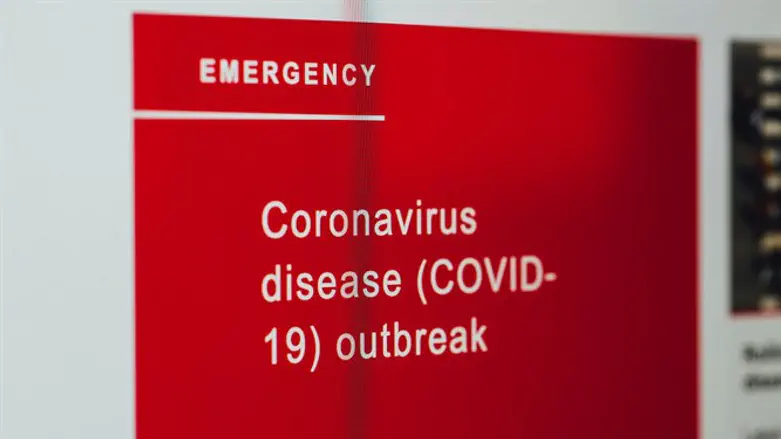
As the COVID-19 virus wreaked havoc across countries, jumping continents, governments and their leaders have responded to the crisis in their own ways - some more effective than others. One common thread is that every leadership has been placed under the microscope, both locally and internationally. Japan and its leadership, in particular, have been on the receiving end of a lot of harsh criticism.
The country had to deal with the cruise ship Diamond Princess at the early stages of the pandemic, with critics aggressively questioning the government’s decision to quarantine the vessel’s passengers and crew. There was some talk about the government underplaying the seriousness of the COVID-19 situation in order to keep the flame of the Tokyo Olympics alive. When testing for the virus was conducted, critics once more fired at the government, saying that there wasn’t enough testing being done. Local journalists and pundits, as well as citizens, got on their soapboxes and lambasted Prime Minister Shinzo Abe, saying he was bungling Japan’s response to the COVID-19 pandemic.
And yet, today, the country boasts impressive figures relating to the pandemic. As of June 12, there is a total of 17, 292 confirmed cases -15, 383 of which have recovered - and 920 deaths. This amounts to an 88 percent recovery rate and a 5 percent mortality rate.
In a country which is home to 126 million people, these numbers are nothing less than spectacular.
And yet critics abound. Prime Minister Abe’s ratings have dropped to 29 percent, a record-breaking low, towards the end of May. This figure is indicative of the view of the Japanese people on how their leader has handled the pandemic. In essence, they believe that the government has failed them.
However, the current situation in the country makes for a strong case stating otherwise. One can go as far as say that Japan is a COVID-19 success story in spite of the local criticism.
While most countries are still on a lockdown of some sort, Japan has lifted its nationwide decree of emergency. At the end of May, Prime Minister Abe declared that the “Japan Model” has effectively beaten the coronavirus. Almost halfway through June, daily new cases reported are in the high 30s/low 40s. Compare this to the United States, which still has more than 20,000 new cases per day. Or South Korea, which has 40-50 new cases per day.
How does one reconcile the low ratings with the COVID-19 numbers? There is a dichotomy that cannot be ignored. What is the explanation, and which is the accurate measure of Japan’s response to the pandemic?
The objective answer is to believe the statistics. After all, numbers don’t lie. Without these hard facts, the government would not have been able to lift restrictions and jumpstart its economy.
The ratings are numbers, as well, though, and cannot be discounted. There is however, a logical way to approach this.
By its very definition, ratings are based on perception. And perception, in turn, is inherently objective unlike infection rates, recovery rates, and mortality rates.
The obvious conclusion, therefore, is that there must be an incongruence between the perception of the Japanese people and the results of the government’s efforts to fight the COVID-19 pandemic.
Phillip Y. Lipscy, an associate professor of political science at the University of Toronto and Chair in Japanese Politics and Global Affairs and the Director of the Centre for the Study of Global Japan at the Munk School of Global Affairs & Public Policy has interesting insights on the matter. Taking to Twitter in May, he states that “in terms of COVID outcomes measures, Japan is doing surprisingly well: actually among the best in the world. This gap between perception and outcome is fascinating.”
He further explains possible reasons for the negative perception expressed by the Japanese people.
“I think there are a few reasons. COVID is cyclical. Japan was affected early in January, so the government response also started earlier. Japan responded early to COVID; cases remained relatively low with measures like contact tracing and avoidance of high-risk interactions. The government faced a real dilemma about whether more stringency was worth the economic cost. Other countries didn’t have this luxury.”
He emphasizes the fact that Japan’s response to the crisis is “off cycle”, having had to face the problem earlier than other countries. This has greatly influenced the perception of the Japanese people, especially when they compare their situation with that of other countries.
As a result, decisive action by the government, albeit soft compared to other countries, has been downplayed in the eyes of the citizens. While there wasn’t a strict lockdown, the government was quick to acknowledge the danger of mass gatherings. Since the Prime Minister did not have the powers, legally speaking, to impose lockdowns such as those implemented in Europe, he did shutdown mass gatherings as well as institutions such as museums, theme parks, and theaters. He also made his presence felt by calling on his constituents to practice avoiding the “three Cs”: confined and crowded space and close human contact.
For sure, the cooperation of individuals have played a huge role in containing the virus. If they hadn’t responded positively to the call for taking personal responsibility, Japan’s efforts may have been less effective. Yet it is undeniable that, despite their apparent dissatisfaction with their leaders, the Japanese people are enjoying a success that wouldn’t have been possible without the government’s actions.
Ratings may be at an all-time low, but the fact that “normal” life is slowly re-emerging says volumes. Japan’s response to the pandemic has been a success, negative perception or not.